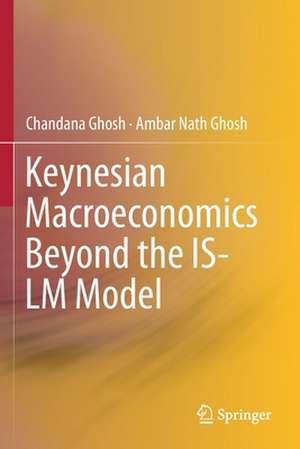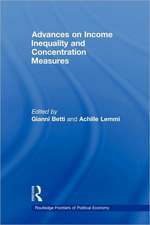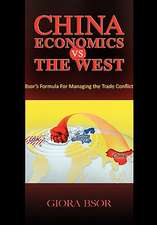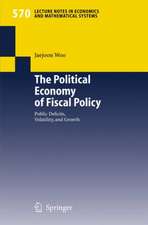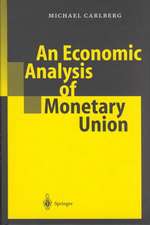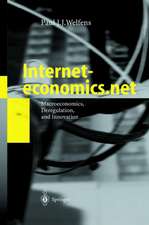Keynesian Macroeconomics Beyond the IS-LM Model
Autor Chandana Ghosh, Ambar Nath Ghoshen Limba Engleză Paperback – 14 aug 2020
In the Indian context, it focuses on the issues of unemployment, growth, recession, bank performance, banking sector reforms and corruption. It also seeks to identify the causes of economic crises in Greece and the US. The analysis reveals a common trend in the economies considered here: the policy framework within which they function is recessionary, exploitative and fosters unemployment, inequality and poverty. Further, this framework is leading these economies farther away from the goal that every civilized society should strive to achieve, namely, providing all citizens with suitably gainful jobs and adequate access to quality food, clothing, shelter, education and health care. The book seeks to identify the cause of this malady, and puts forward policies to remedy it. It thus contains takeaways for academia, think tanks as well as policy makers.
| Toate formatele și edițiile | Preț | Express |
|---|---|---|
| Paperback (1) | 486.42 lei 6-8 săpt. | |
| Springer Nature Singapore – 14 aug 2020 | 486.42 lei 6-8 săpt. | |
| Hardback (1) | 590.49 lei 6-8 săpt. | |
| Springer Nature Singapore – 4 iun 2019 | 590.49 lei 6-8 săpt. |
Preț: 486.42 lei
Nou
Puncte Express: 730
Preț estimativ în valută:
93.08€ • 99.53$ • 77.61£
93.08€ • 99.53$ • 77.61£
Carte tipărită la comandă
Livrare economică 17 aprilie-01 mai
Preluare comenzi: 021 569.72.76
Specificații
ISBN-13: 9789811378904
ISBN-10: 9811378908
Pagini: 258
Ilustrații: XIII, 258 p. 23 illus.
Dimensiuni: 155 x 235 mm
Greutate: 0.39 kg
Ediția:1st ed. 2019
Editura: Springer Nature Singapore
Colecția Springer
Locul publicării:Singapore, Singapore
ISBN-10: 9811378908
Pagini: 258
Ilustrații: XIII, 258 p. 23 illus.
Dimensiuni: 155 x 235 mm
Greutate: 0.39 kg
Ediția:1st ed. 2019
Editura: Springer Nature Singapore
Colecția Springer
Locul publicării:Singapore, Singapore
Cuprins
Chapter 1: The IS-LM Model: The Reason to Go Beyond It.- Chapter 2: Interaction between the Real Sector and the Financial Sector: An Alternative to the IS-LM Model.- Chapter 3: An Alternative to the IS–LM Model: Perfect Capital Mobility.- Chapter 4: Alternative to the IS-LM: Imperfect Capital Mobility.- Chapter 5: India’s Economic Performance and Banks.- Chapter 6: Non-Performing Assets of Banks in India.- Chapter 7: Corruption and Banks in India.- Chapter 8: Economic Crisis in Greece.- Chapter 9: Economic Crisis in the US Economy.- Chapter 10: Global Macroeconomic Scenario and Macroeconomics: An Assessment.
Notă biografică
Dr. Chandana Ghosh is an Assistant Professor in the Economic Research Unit, Indian Statistical Institute, Kolkata. She has written four books (coauthored with Ambar Nath Ghosh) all published by Prentice Hall of India: “Economics of the Public Sector” (2008), “Public Finance”, 2nd ed. (2014), “Macroeconomics” (2011) and “Indian Economy: A Macro-Theoretic Analysis” (2016). All of these books are frequently used at many prominent universities and colleges throughout India.
Dr. Ambar Nath Ghosh is a Professor at the Department of Economics, Jadavpur University, Kolkata. In addition to the books mentioned above that her has co-authored with Chandana Ghosh, he has also co-edited (with Asim Karmakar) the book “Analytical Issues in Trade, Development and Finance,” published by Springer in 2014.
Dr. Ambar Nath Ghosh is a Professor at the Department of Economics, Jadavpur University, Kolkata. In addition to the books mentioned above that her has co-authored with Chandana Ghosh, he has also co-edited (with Asim Karmakar) the book “Analytical Issues in Trade, Development and Finance,” published by Springer in 2014.
Textul de pe ultima copertă
This book makes an original and significant contribution to Keynesian macroeconomics. The IS-LM model is a basic workhorse of Keynesian macroeconomics. However, its financial aspects are extremely rudimentary and the link between the real and the financial sector is extremely tenuous. Hence, neither the IS-LM model nor IS-LM-based models can be applied to the major economic issues facing today’s world. This book develops alternative models in the Keynesian tradition that incorporate financial institutions and make explicit the intimate link between the processes of generation of income, saving, credit and expenditure. It subsequently uses these models to address the major current macroeconomic issues that India and the rest of the world are confronted with.
In the Indian context, it focuses on the issues of unemployment, growth, recession, bank performance, banking sector reforms and corruption. It also seeks to identify the causes of economic crises in Greece and the US. The analysis reveals a common trend in the economies considered here: the policy framework within which they function is recessionary, exploitative and fosters unemployment, inequality and poverty. Further, this framework is leading these economies farther away from the goal that every civilized society should strive to achieve, namely, providing all citizens with suitably gainful jobs and adequate access to quality food, clothing, shelter, education and health care. The book seeks to identify the cause of this malady, and puts forward policies to remedy it. It thus contains takeaways for academia, think tanks as well as policy makers.
In the Indian context, it focuses on the issues of unemployment, growth, recession, bank performance, banking sector reforms and corruption. It also seeks to identify the causes of economic crises in Greece and the US. The analysis reveals a common trend in the economies considered here: the policy framework within which they function is recessionary, exploitative and fosters unemployment, inequality and poverty. Further, this framework is leading these economies farther away from the goal that every civilized society should strive to achieve, namely, providing all citizens with suitably gainful jobs and adequate access to quality food, clothing, shelter, education and health care. The book seeks to identify the cause of this malady, and puts forward policies to remedy it. It thus contains takeaways for academia, think tanks as well as policy makers.
Caracteristici
Develops Keynesian models that address the deficiencies of the IS-LM model and can be used to assess the major macroeconomic issues facing today’s world Shows how such a model can be used to examine some of the major macroeconomic problems that India and the rest of the world are currently confronted with, and which IS-LM model and its extensions are powerless to solve Identifies the causes of deprivations faced by the common man in the capitalist world, and suggests policies to remedy them
